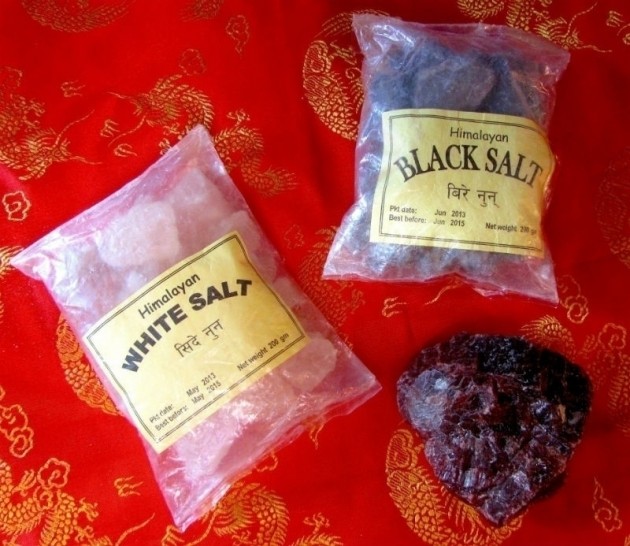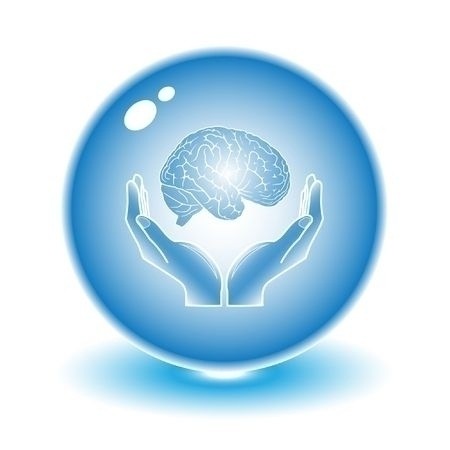Hypothyroidism
Hypothyroidism occurs when your thyroid gland, at the front of your neck, doesn't produce enough thyroid hormone or when your body fails to use thyroid hormone efficiently. There are several types of hypothyroidism. The most common is Hashimoto's thyroiditis, an autoimmune disease in which the body attacks the thyroid gland. The disease affects both sexes and all ages, but is most...
Skin Conditions
Acne Vulgaris An inflammatory disease most commonly seen in teenagers. It affects areas where sebaceous glands are largest, most numerous, and most active. Mild cases consisting of few residual signs except possibly dilated pores, and the development of the comedo, or blackhead, may progress through more pathological stages of ruptured sebaceous ducts, pustule formation,...
Sprain / Strain
Sprain: Wrenching or twisting of a joint with partial rupture of its attaching ligaments. Strain: Over-stretching a muscle. Invariably, both conditions are trauma-induced. Of the two, the sprain is the more serious. There are three classifications of a sprain: Grade 1: Mild/minimal sprain with no ligamentous tear. There may be pain, swelling and tenderness....
Tendinitis
Inflammation of the tendon and the lining of the tendon sheath. The sheath is typically the focus of the involvement, but the body's inflammatory response usually involves the tendon, too. The etiology is unknown, although repetitive or forceful trauma, exercise or strain, systemic diseases (rheumatoid arthritis, gout, Reiter's syndrome) and hypercholesterolemia are implicated.
Acid Reflux - Gastroesophageal Reflux Disease
Gastroesophageal reflux disease (GERD) is a disorder in which contents of the stomach or small intestine repeatedly move back up into the esophagus (tube connecting the throat to the stomach). This regurgitating action is called reflux. Reflux causes heartburn, and although most people have an attack of heartburn at some point in their lives, persistent reflux and severe heartburn may indicate...
Alzheimer's Disease
Adapted from the book "BrainRecovery.com" by David Perlmutter, MD Board-Certified Neurologist At present, approximately 4.5 million Americans have Alzheimer's disease. By the year 2030, it has been estimated that this number will approach 9 million. Prevalence of Alzheimer's disease has been estimated to be 50% in individuals 85 years or older-the most rapidly growing segment of...
Ankylosis Spondylitis
Ankylosis Spondylitis is defined as a chronic and generally progressive inflammatory arthritic disease affecting the spinal joints and adjacent connective tissues. Also called "Marie Strumpell Disease." This appears to be a disease mainly of young men aged 10-30 years old. It seems to have a genetic component, as it is seen in male relatives and especially in patients with...
Asthma
Asthma is a disease in which inflammation of the airways restricts airflow in and out of the lungs. The word asthma comes from the Greek word for "panting." The panting and wheezing sound characteristic of asthma occur because of the restricted flow of air. Normally, when you breathe in an irritant or are subjected to a stressor such as exercise, your airways relax and open, allowing...
Autoimmune Conditions
Examples of autoimmune conditions include the following: Rheumatoid arthritis (RA) Type 1 diabetes Crohn's Disease Hashimoto's thyroiditis Neurological diseases Multiple Sclerosis (MS) Glomerulanephritis Pernicious Anaemia Goodpasture's syndrome Scleroderma Raynaud's Phenomenon Lupus (e.g., systemic lupus erythematosus [SLE]) Inflammatory bowel disease (IBD)...
Bioactive Plant Fraction Therapy
Formulated for peak wellness by Dr. T, the products below are made from the scientifically-validated bio-active molecules isolated from pure, organic, sustainably-grown natural plant oils. These innovative formulations can either be inhaled from pocket-size inhalers, or from an ultrasonic diffuser. Indoor diffusion helps to manage molds, fungal spores, and other microbes, and can help reduce...
Bursitis
Bursitis is an Acute or chronic inflammation in a bursa. Bursae are thin-walled sacs lined with synovial fluid and function to lubricate and ease the movement of the tendons and muscles over bony prominences. Causes of bursitis include trauma; systemic disease (such as arthritis or rheumatoid arthritis); gout; repetitive or excessive frictional force; or infection. Most commonly, bursitis is...
Cardiovascular Disease
Definitions of Cardiovascular Disease Risk Factors Total cholesterol Cholesterol is a waxy fat like substance. Total cholesterol refers to the sum of the different sub-fractions of cholesterol that are measured in the blood. Total cholesterol is an independent risk factor for cardiovascular disease. The National Cholesterol Education Program says 240 is considered high. A person with this level...
Carpal Tunnel Syndrome
An entrapment neuropathy of the median nerve and, less commonly, compression of the finger flexor tendons, producing paresthesia, atrophy, and weakness in the affected hand. The syndrome is caused by continuous pressure on the median nerve as it passes through the anterior carpal tunnel, which is defined by the carpal bones (proximally: pisiform and the tubercle of the navicular; distally: hook of...
Eye Conditions
Cataracts Cataracts are clumps of protein that collect on the lens of an eye and interfere with vision. Normally, light passes through the lens (the clear tissue behind the pupil) and focuses on the retina. The retina is the light-sensitive layer of the eye that sends visual signals to the brain. A cataract occurs when the normally clear lens becomes cloudy. Most cataracts develop slowly...
Facet Syndrome
Facet syndrome is used to describe chronic or acute inflammation of the articular facet joints which guide vertebral motion. These joints are lined by cartilage and surrounded by capsular ligaments which are richly innervated by pain fibers. These joints are inflamed by trauma (as in flexion/extension injuries; "whiplash") or in overloading injuries such as lifting a heavy load and...
Female Conditions
Amenorrhea Absence of menstruation. Amenorrhea may be primary (the girl has never begun her periods) or secondary (the woman had her periods once and then stopped having them). Physiologic amenorrhea is the lack of menses before menarche, during pregnancy and early lactation, and after menopause (all considered normal). All other causes of amenorrhea are pathologic. Causes of Primary...
Fracture
Any break in a bone. There are many types of fractures:
Frozen Shoulder
A syndrome in which a stiff shoulder is restricted and painful in both active and passive movement. Also known as adhesive capsulitis, periarthritis, and pericapsulitis. The involved joints are the scapulothoracic and glenohumeral. There is no bony ankylosis. Causes include any type of pain in the shoulder upon movement, and immobilization from shoulder injury. Frozen shoulder is seen most often...
Gout
Gout is a type of arthritis that occurs when too much uric acid builds up in the body, causing crystals to form in joints and joints to become inflamed. It can be hereditary or the result of another condition. Gout usually affects men over 40 with a family history of gout, but it can occur at any time and also affects women, especially after menopause. Excessive intake of food and alcohol,...
Headache: Vascular / Migraine
Headaches from vascular disturbance. There are several types of vascular headaches: Migraine: Periodic throbbing headaches. The prodrome seems to be due to a vasoconstriction of the cerebral blood vessels (or the vessels leading into the brain), while the headache itself seems to be due to a vasodilation of the blood vessels with subsequent congestion of tissues; seen more often in women...
Inflammatory Bowel Disease (IBD)
Crohn's Disease, Ulcerative Colitis, Irritable Bowel Syndrome, and Celiac Disease
Low Back Pain
Pain felt either in the lumbar, lumbosacral, or sacroiliac areas. Most low back pain is from degenerative joint disease in the lumbosacral region, poor posture, the beer belly, constipation, and stress-induced myospasms of the lumbosacral region. Low back pain is commonly associated with sciatica. The prognosis depends on the cause. Generally, the condition is benign and the prognosis is...
Lupus (Erythematosus)
This is a chronic, inflammatory, autoimmune (the body is attacking itself) disease that affects connective tissue (tissue that binds and supports various structures of the body and also includes the blood). Discoid lupus erythematosus (DLE) is a less serious type, affecting exposed areas of the skin and sometimes the joints. Systemic lupus erythematosus (SLE) is more serious,...
Mouth / Lip Conditions
Angular Stomatitis Redness, cracking and flaking at corners of mouth. Significant if bilateral only. Rule out poor dentures, syphilis, herpes. Nutrients Involved Riboflavin, niacin, pyridoxine, iron Suggested Nutritional Supplementation Hemagenics - 1-2 tablets twice daily with food. Nutritional support for red blood cell formation. Lipotain -...
Multiple Sclerosis
Nearly 350,000 Americans are affected by one of medicine's most misunderstood diseases, multiple sclerosis. Although there is no known cure, alternative medicine has recognized a number of contributing factors. Often, the early detection and identification of underlying causes combined with strict dietary and life-style guidelines can stabilize or reverse the symptoms.
Myofibrositis
Scar-type tissue causing restriction of tissue motion. Traumatic tearing of soft tissues or long standing muscle spasms cause production of thixotropic gel which organizes itself into collagen scar tissue. This is the body's attempt to stabilize what is perceived as injury. Three problems result from this scar formation:
Osteoporosis
A decreased density of bone compared to normal bone mass of age and sex matched controls. It is the most prevalent bone disease in the world. There are many factors that can contribute to osteoporosis, the most common is postmenopausal, estrogen deficient osteoporosis. More than one-half of women in the United States who are 50 years of age or older will have documented osteoporosis,...
Pain/Inflammation Management
A feeling of distress, suffering, or agony caused by stimulation of specialized nerve endings. The sensation we feel as pain is produced through a number of complex biochemical interactions. These interactions can be likened to a battle between the good guys, the body's natural pain relieving force, and the bad guys, the pain producers. When the good guys are winning the battle, we are not...
Parathyroid Conditions
Hypoparathyroidism There are four parathyroid glands, located near each of the two lobes of the thyroid gland. The parathyroids produce parathyroid hormones that regulate blood levels of calcium necessary for strong bones and teeth, nerve function, and blood clotting. Hypoparathyroidism is a rare disorder associated with insufficient production of parathyroid hormone, the inability to make a...
Periodontal Disease
Gingivitis, Periodontitis, and Scorbutic Gums Periodontal disease is a scourge on our society. It accounts for more lost teeth in adulthood than any other dental problem. Gum disease will affect nine out of ten Americans, and one out of every four persons will lose all their teeth to periodontal disease by age 60. Thirty-two million Americans have gum disease right now in such an advanced state...
Polymyalgia Rheumatica
What is polymyalgia rheumatica? Polymyalgia rheumatica (pronounced pah-lee-my-al-jah room-at-i-ca) is a type of arthritis that affects the muscles. It does not affect the bones, or the joints, which are the spots where two bones come together. It causes muscles to become stiff, tender and very sore. This is called inflammation. Even though the muscles are sore they do not become weak.
Rheumatoid Arthritis
The Natural Approach Rheumatoid arthritis is a chronic inflammatory condition that affects the entire body but especially the synovial membranes of the joints. It is a classic example of an "autoimmune disease," a condition in which the body's immune system attacks the body's own tissue. Although rheumatoid arthritis is a systemic disease, it affects primarily the joints. The...
Sciatica
A specific entity with many causes. Involves inflammation of the great sciatic nerve and presents as acute or chronic pain down the back of the leg originating in the buttock and extending to the foot. Pressure can originate in the nerve roots, as in discopathy or facet syndrome, or can be caused by the gluteal muscles or piriformis tightening over the nerve. Gluteal muscle spasm is often...
Functional Medicine and Beyond
By Prof. Adiel Tel-Oren, MD (Europe), CCN, DABFM, DACBN, LN, DC(ret), DABOM, FABDA; Practice Focus: Nutritional, Environmental, & Functional Medicine President & Founder, Ecopolitan Eco-Health Network (www.ecopolitan.com) President Emeritus & Professor of Nutrition and Functional Medicine, University of Natural Medicine
Overcoming Resistance to Holistic Medicine
Question: My 9 year old daughter has chronic recurring urinary tract infection, and has been under medical care (antibiotics, anti-inflammatory drugs) for many years, without success. I want to try another approach, but my husband's parents are medical doctors and they resist any alternative approach. I would like to have a consultation with you for examination and diagnosis, but first I must...
Cancer
What are the nutritional strategies in treatment of cancer? Here is your guide to enhancing the immune / antioxidant status, enzyme therapy, chemotherapy and / or radiation therapy support and suggested nutritional supplementation.






